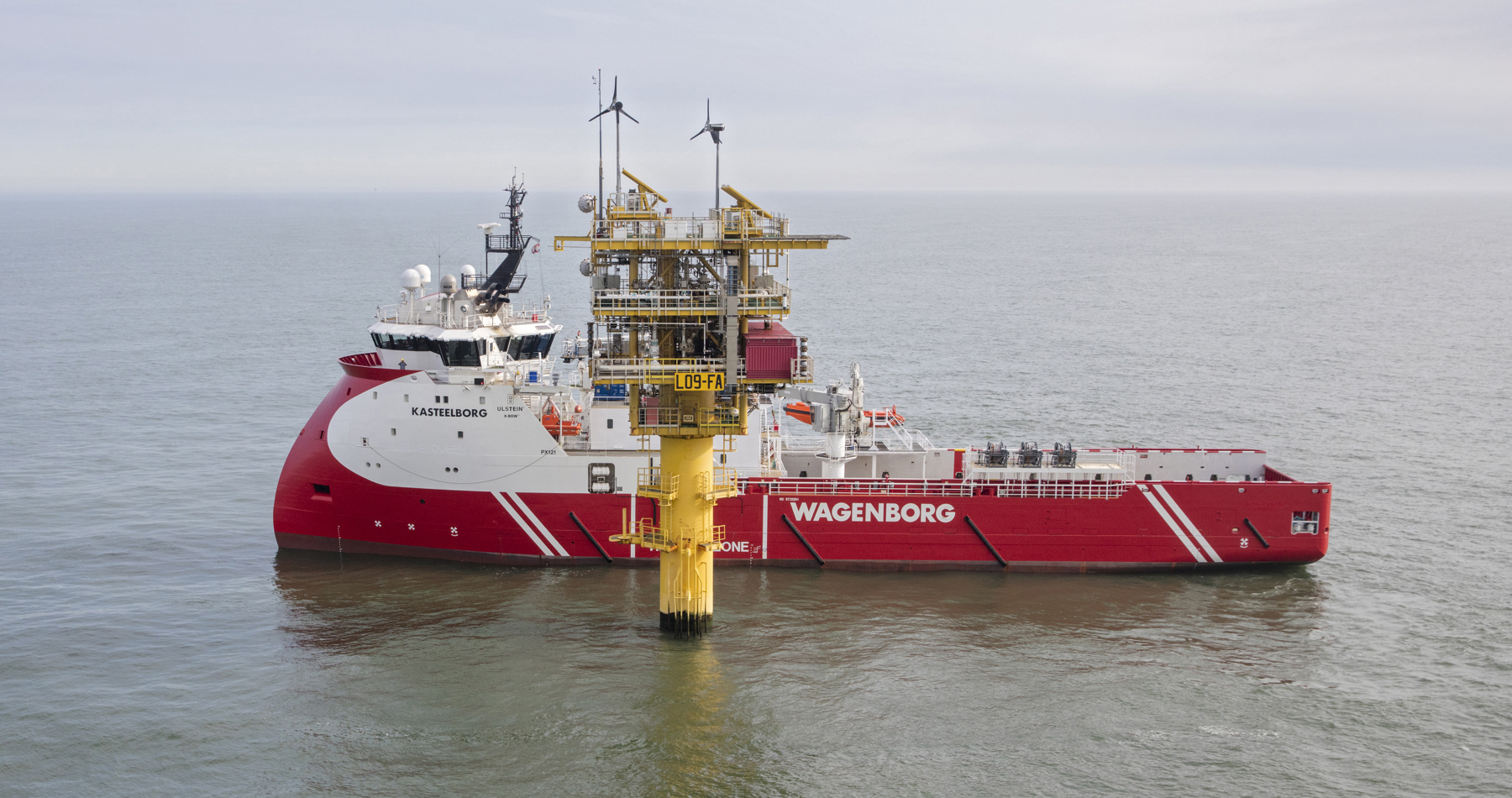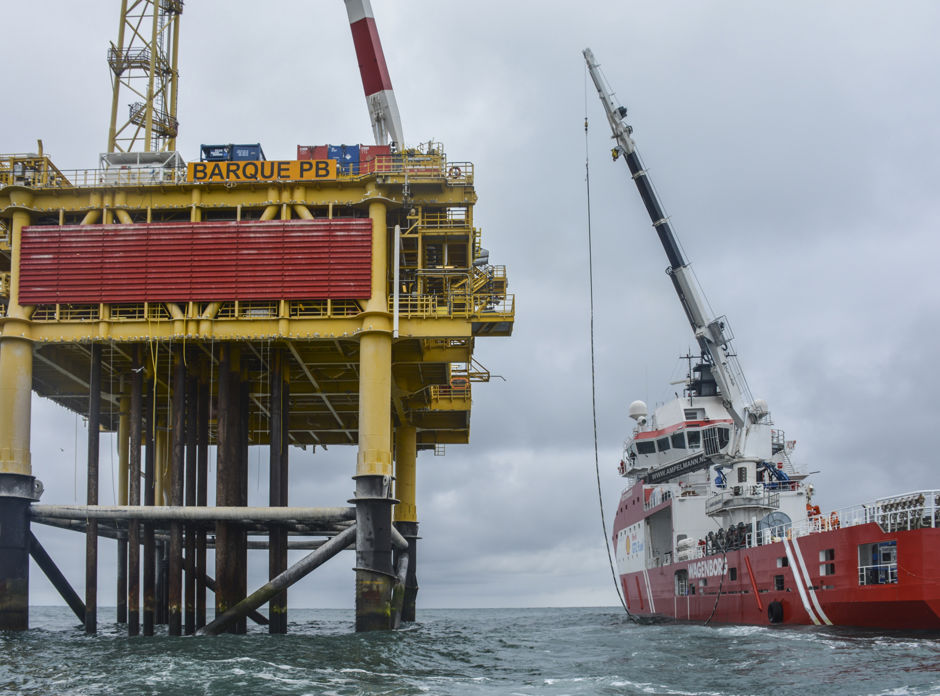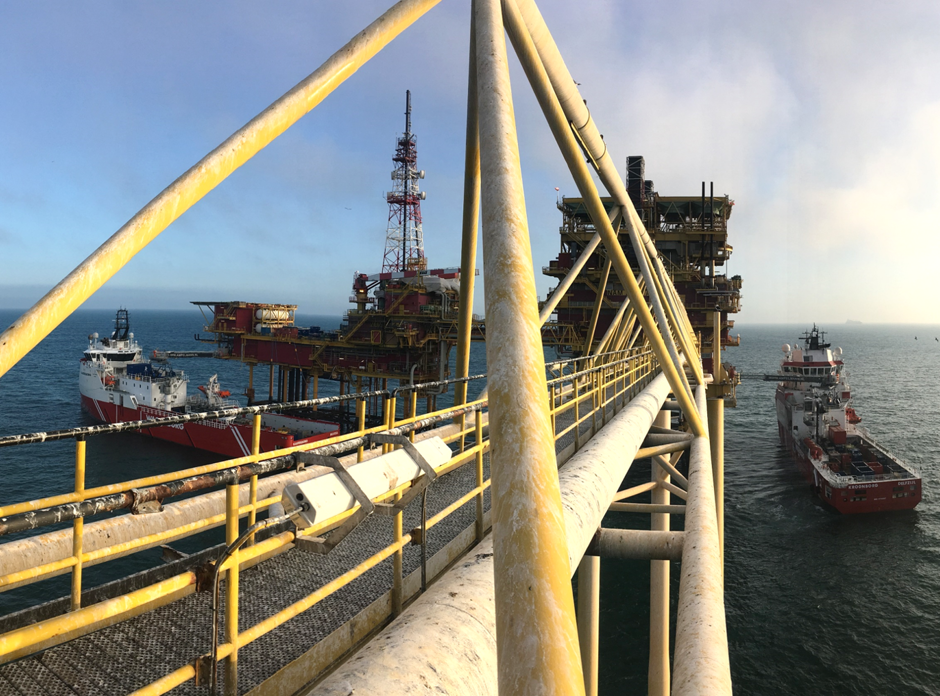
New methods of working at sea
After a tender procedure, Nederlandse Aardolie Maatschappij (NAM) and Shell UK Exploration & Production (Shell UK) have signed a contract with Wagenborg Offshore for the deployment of a second Walk-to-Work vessel. The new vessel will join the Kroonborg, put into service almost three years ago, in maintaining NAM and Shell UK’s unmanned platforms in the southern sector of the North Sea. We talked to Joris Eelman, Maintenance & Ops team leader NUIs, about the second Walk-to-Work vessel and how he sees the future.
Joris Eelman has a twinkle in his eye when he comes on board the Kasteelborg. “It’s astonishing how the shipyard managed to convert this ship into our second Walk-to-Work vessel in such a short span of time,” he says elatedly. “Along with the Kroonborg, the new vessel is a real game-changer when it comes to our maintenance activities on unmanned offshore platforms not only in terms of safety, but also efficiency and productivity.”
As Maintenance & Ops team leader, Joris is responsible for NAM and Shell UK’s unmanned platforms in the southern sector of the North Sea. He manages the Dutch and British onshore teams that prepare the maintenance campaigns as well as the two teams that carry out the maintenance, one by helicopter and the other from the Walk-to-Work vessels.

“We put the Kroonborg into service a few years ago to improve safety as well as increase our productive offshore hours,” Joris continues. “Our idea was to use the vessel to perform systematic maintenance at our offshore locations. The new working method using W2W vessel Kroonborg has been extremely successful.” So far, the Kroonborg has conveyed almost 44,000 people to platforms and performed 2800 manoeuvres with its crane. NAM/Shell technicians live on the vessel and do the rounds of the many unmanned platforms where they carry out their work. The employees can walk safely from vessel to platform on an advanced gangway that compensates for the motion of the waves. The crane also works on the same principle and lifts the equipment safely to the platform, even in rough seas.
This second Walk-to-Work vessel is absolutely the right way to reduce our costs.
“Safety is very important to us. We had already cut back drastically on the number of helicopter flights bringing employees and equipment to the platforms. Once we deploy the second Walk-to-Work vessel, we won’t have to use the helicopters at all anymore. That will cut down on the time employees spend travelling and give them more productive hours on the platform itself. Travelling back and forth to a manned platform by helicopter limits those hours. We’ll undoubtedly gain other efficiency and logistical advantages. Kasteelborg is also equipped with ERRV functionalities, so it can be deployed as a rescue vessel in emergencies,” Joris says.
The Kasteelborg is about the same size as the Kroonborg, but there will be fewer people residing on board and they will be doing different work. Joris explains. “The second vessel will be used for urgent work and unplanned interventions, for example starting up systems and performing minor corrective maintenance. That way the Kroonborg can concentrate on the larger, scheduled maintenance campaigns. In addition, the Kasteelborg will also undertake some specific activities, for example stimulating natural gas wells with foam so that they have a longer production life and we can extract more natural gas offshore.”

The deployment of two Walk-to-Work vessels also has implications for the way in which NAM/Shell’s unmanned platforms are equipped. “Virtually all the unmanned platforms in the southern North Sea that we used to visit by helicopter can now be stripped down. We’ll be removing their helicopter pads and cranes because the functionalities of the Kroonborg and the Kasteelborg have made them unnecessary. That means even less maintenance and even more significant cost savings. An additional advantage is that eliminating the helicopter flights will be good for the environment. We won’t be using as much helicopter fuel, and that means lower carbon emissions. In short, the arrival of a second vessel will take us into a new phase of operating and maintaining our unmanned platforms. It was absolutely the right way to reduce our costs,” concludes Joris.
The new way of working with Walk-to-Work vessel Kroonborg has been very successful.

